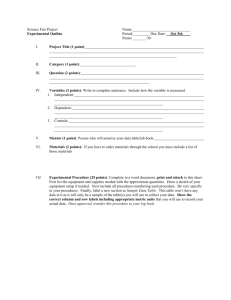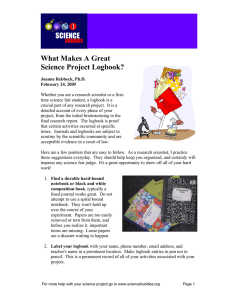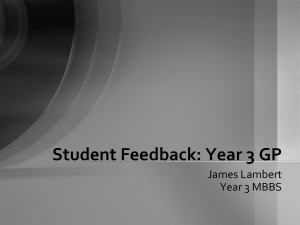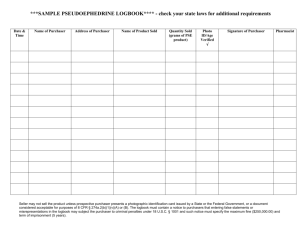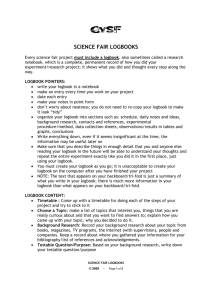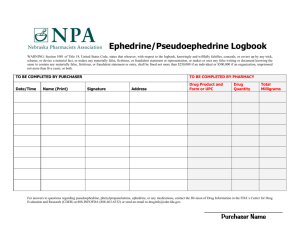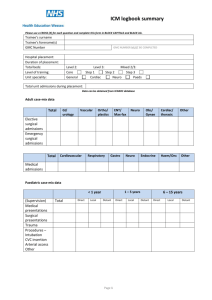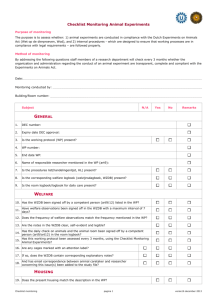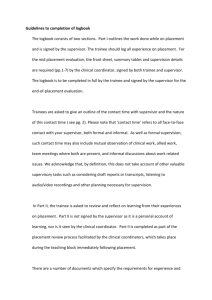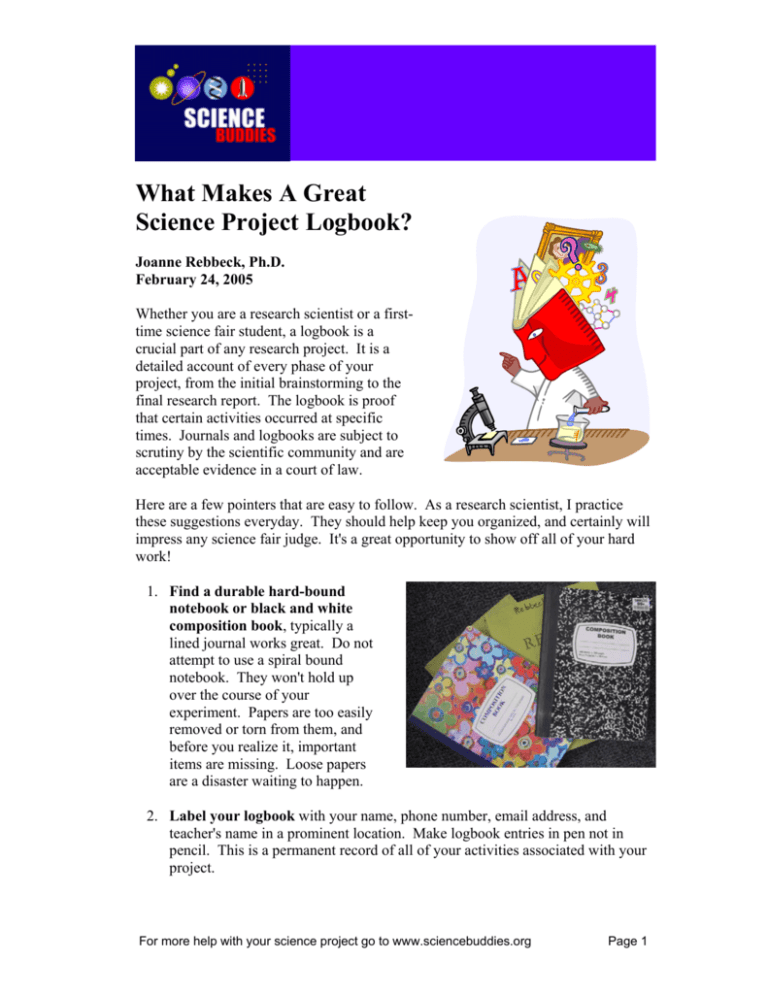
What Makes A Great
Science Project Logbook?
Joanne Rebbeck, Ph.D.
February 24, 2005
Whether you are a research scientist or a firsttime science fair student, a logbook is a
crucial part of any research project. It is a
detailed account of every phase of your
project, from the initial brainstorming to the
final research report. The logbook is proof
that certain activities occurred at specific
times. Journals and logbooks are subject to
scrutiny by the scientific community and are
acceptable evidence in a court of law.
Here are a few pointers that are easy to follow. As a research scientist, I practice
these suggestions everyday. They should help keep you organized, and certainly will
impress any science fair judge. It's a great opportunity to show off all of your hard
work!
1. Find a durable hard-bound
notebook or black and white
composition book, typically a
lined journal works great. Do not
attempt to use a spiral bound
notebook. They won't hold up
over the course of your
experiment. Papers are too easily
removed or torn from them, and
before you realize it, important
items are missing. Loose papers
are a disaster waiting to happen.
2. Label your logbook with your name, phone number, email address, and
teacher's name in a prominent location. Make logbook entries in pen not in
pencil. This is a permanent record of all of your activities associated with your
project.
For more help with your science project go to www.sciencebuddies.org
Page 1
3. Number the pages in your logbook before using it, unless already numbered
for you.
4. Always date every entry, just like a journal. Entries should be brief and
concise. Full sentences are not required.
Logbook entry of observations made while watering planted oak acorns in greenhouse
5. Don't worry about neatness. It's a personal record of your work. Do not re-do
your logbook because it looks sloppy. Think of the logbook as your "Dear
Diary" for science fair. It's not just for recording data during the experimental
phase of your project and it's not just for your teacher.
For more help with your science project go to www.sciencebuddies.org
Page 2
6. It should be used
during all phases
of your project,
jotting down ideas
or thoughts for a
project, phone
numbers, contacts
or sources and
prices of supplies,
book references,
diagrams, graphs,
figures, charts,
sketches, or
calculations.
Sketch of layout of sample points inside shade tents
Log entries should
include your
brainstorming,
calculations,
library/internet searches,
phone calls, interviews,
meetings with mentors
or advisors, notes from
tours of laboratories,
research facilities and
other related activities.
Remember that it's
documentation of your
work.
Hand drawing showing different ages of tree
branches that were sampled during an
experiment
7. Use it regularly and write down everything, even if it seems insignificant, it
could later be extremely useful. For example, it's the middle of the night and
you're frantically preparing that final report but you can't find the title of that
crucial reference. Make sure that you describe things completely, so that when
you read your notes weeks or months later you will be able to accurately
reconstruct your thoughts and your work.
For more help with your science project go to www.sciencebuddies.org
Page 3
8. Glue, staple or tape any
loose papers, photocopies of
important items. Loose
papers or other unsecured
items are prohibited as they
tend to fall out and can end
up missing.
9. Organize your logbook. Make a table of contents, index, and create tabs for
different sections within your logbook. This helps keep you organized for
different activities. For example, have a data collection section, a section with
contacts, sources, etc. and a section of schedule deadlines.
Table of Contents
10.
Tab color
Page #
Deadline Schedule
Red
1
Daily Notes &
Reflections
White
2
Background Research
Library & Internet
Blue
20
Information
Contacts, Supply
sources
Green
26
Experimental Setup
Yellow
35
Data collection
Purple
40
Results (pictures,
graphs, summary
tables)
Orange
50
Reflections
Light blue
60
Include a reflections section in your logbook. For example, what, if anything
would I do differently next time? What part of the experiment could be
changed to improve the experimental procedure?
For more help with your science project go to www.sciencebuddies.org
Page 4
11.
Always include any changes made to procedures, mishaps, failures, or
mistakes. As human beings, all of us make mistakes!
1/4/05 my cat, Sheba scratched the
pots of soil, and ate 4 of my 12 plants.
I will have to replant everything! I
need to protect plants from the silly
cat. Maybe i should try putting a
screen around the pots or keep cat
outside!
12.
2/5/05 Disaster in the lab this morning.
Setup manure digoestors last night in
incubators, temperature was set at 25°C but
came into a real mess, samples heated up too
much and caps blew off. I will need to try a
lower temperature to avoid this accident from
happening again!!!! HUGE MESS TO CLEAN
UP.....
Include any and all observations made during your experiment. In other
words, record ALL data directly in your logbook. If that is not possible, then
staple photocopies of data in the logbook.
Entry of photosynthetic data from oak seedlings. Data files were also stored
electronically on a computer as shown in the next example.
For more help with your science project go to www.sciencebuddies.org
Page 5
A list of data files and description of contents stored on a personal computer
Remember, keeping up a great logbook throughout the entire duration of the science
project really pays off later! Not only will a nicely maintained logbook impress your
teacher and the judges at the fair, it will also help you stay out of trouble later when
you need to look back and provide details of what you did.
Copyright © 2004-2005 Kenneth Lafferty Hess Family Charitable Foundation. Teachers: At
the school where you teach, you may distribute copies of this document to your students,
their parents, and their mentors. You may NOT post this document on the Web or republish it
in any way or form. All other rights reserved.
For more help with your science project go to www.sciencebuddies.org
Page 6

